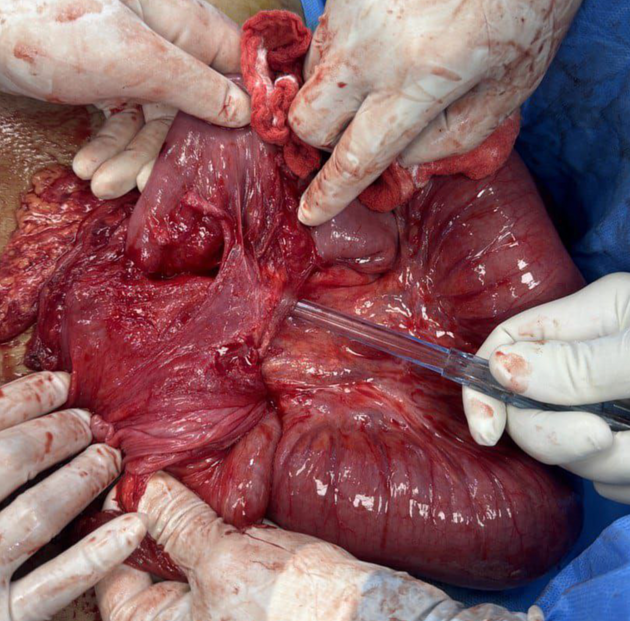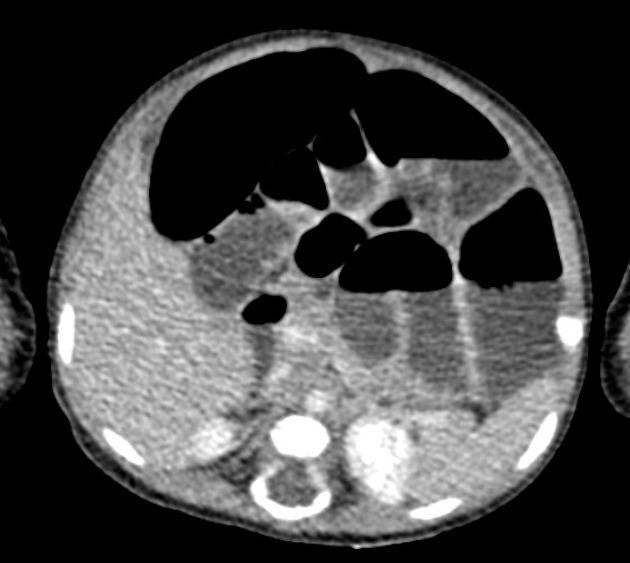Ladd bands are the most commonly encountered form of peritoneal bands in disarrangement of intestines, e.g. intestinal malrotation.
On this page:
Pathology
Classically they extend from the abnormally positioned cecum to peritoneum and liver, crossing the duodenum in their course. Extension, however, can include further parts of the intestine.
Their relevance lies in predisposition to
intestinal obstruction by internal hernias or volvulus
intestinal infection within an extra compartment, e.g. fever of unknown origin
Radiographic features
They are usually not visualized directly unless very extensive. Indirect visualization by small bowel pass-through studies is possible. The intestinal malformation may be seen on CT, pass-through studies, US, and MRI.
History and etymology
These "mesenteric attachments" were first described as a cause of congenital duodenal obstruction by American surgeon William E Ladd (1880-1967) in 1932 5. In his publication, he attributed the disease to an embryologic failure of rotation. The surgical procedure for removal of these peritoneal bands is known as Ladd's procedure 4.
Ladd is considered a father of pediatric surgery, and co-founded the division of pediatric surgery at Boston Children's Hospital in 1910. Although most commonly remembered for his work investigating intestinal malrotation, Ladd also developed a surgical treatment for pyloric stenosis and was the first to advocate the use of contrast enema (originally bismuth contrast) for diagnosis and treatment of intussusception 6.






 Unable to process the form. Check for errors and try again.
Unable to process the form. Check for errors and try again.